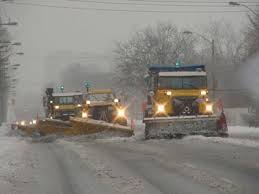WGXC-90.7 FM


Report urges better ways to salt our roads
Jan 06, 2011 7:13 am
 Jim Gordon at HV Biz has a great piece on the web journal currently about how the control of road salt applications by highway crews can save tens of thousands of taxpayer dollars each year and reduce damage to groundwater supplies and surface water, at least according to a report by the Cary Institute of Ecosystem Studies released Dec. 16.
Jim Gordon at HV Biz has a great piece on the web journal currently about how the control of road salt applications by highway crews can save tens of thousands of taxpayer dollars each year and reduce damage to groundwater supplies and surface water, at least according to a report by the Cary Institute of Ecosystem Studies released Dec. 16. The report lists 10 ways to effectively control snow and ice on roads while minimizing salt usage, including calibrating equipment, regulating applicators and retrofitting trucks with air and road temperature sensors. Among other practices, they advocate using real-time data available online to determine whether salt should be used.
Salt spread on roads increases the salinity of drinking water and quickly degrades aquatic environments. The salt has a “legacy effect” because it takes decades to flush from a watershed. The problem is growing because road salt use has spiked in recent decades.
New Hampshire in 1938 was the first state to experiment with sodium chloride as road salt. In 1942 about 5,000 tons of salt was used to de-ice the nation’s roads. Currently, between 10 million and 20 million tons of salt are used annually to de-ice U.S. roads.
The report cited East Fishkill, in Putnam County, as a success story. In 2009, the town retrofitted 16 hydraulic winter trucks with temperature, speed, conveyor and spreader sensors and computers to control the amount of salt spread. The cost was $140,000. Officials said the move saved the town $103,810 last winter, so the investment had almost paid for itself in one winter.
The savings derive from reduced salt use. The town used 10,637 tons of salt at a cost of $744,590 during the winter of 2008-2009. It used 7,154 tons of salt at a cost of $500,780 in the winter of 2009-2010. The report noted that even though less salt was used last winter, there was more snow than in the previous year.
The hi-tech spreader system has another advantage as well. “The data we collect from these trucks will give us a very good idea of the amount of salt that we’re using and will give us a better way to manage it,” said East Fishkill Supervisor John Hickman, a former highway superintendent.
The report also says salt trucks should be carefully loaded, with only the amount actually needed placed in the hopper. Studies show that drivers tend to use whatever is loaded and that such loads typically are 20 percent larger than conditions warrant.


